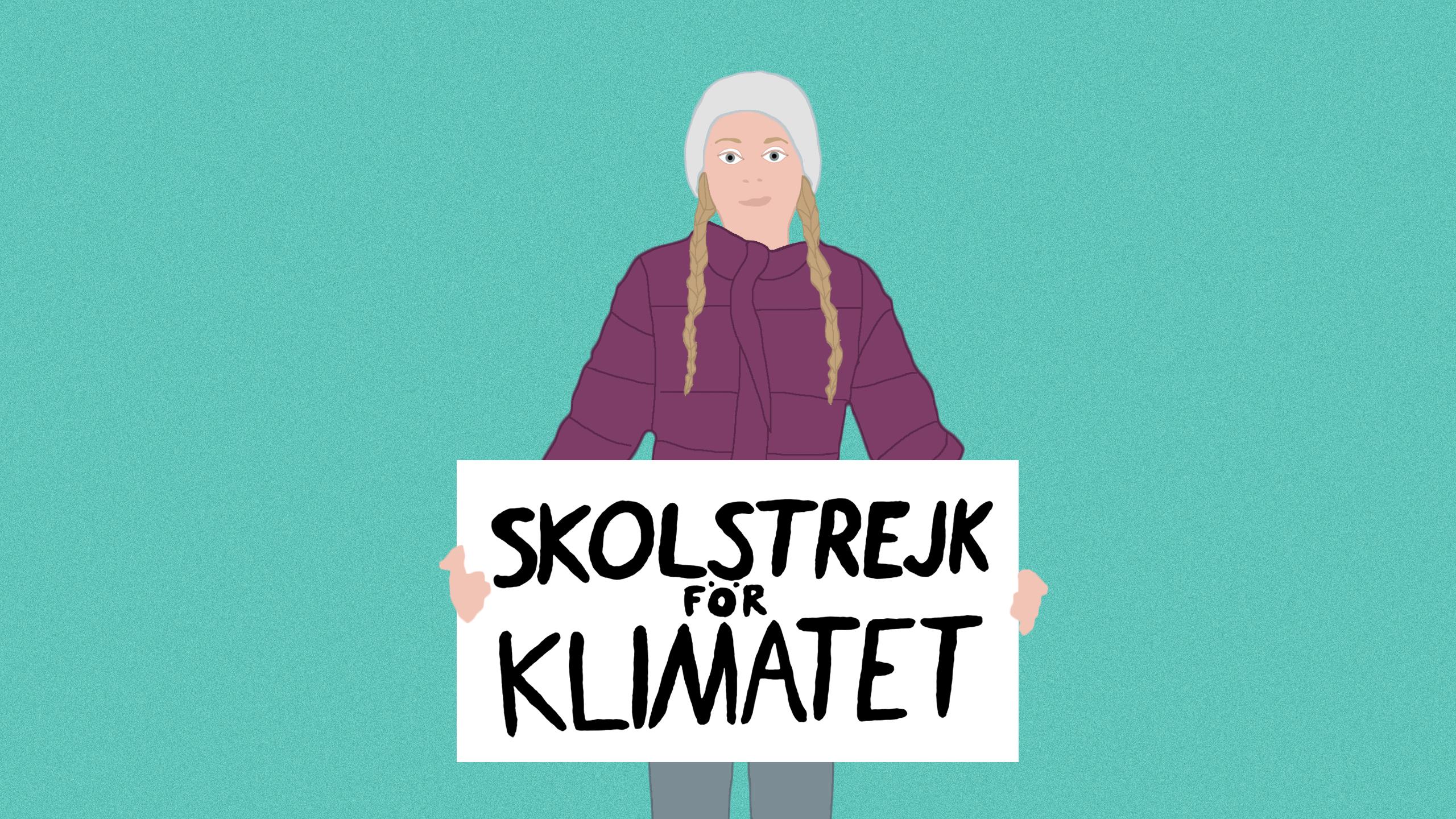By Kieona George
Global protests for the climate crisis are taking place on Sept. 20 and 27 with organizations around the world, including Fridays For Future (FFF), a movement started by teenage climate activist Greta Thunberg. Youth and adults around the world will be spending the two Fridays out of school.
“What this moment can do is demonstrate that people are no longer willing to continue with business as usual,” reads the global climate strike website. “Our house is on fire. The climate crisis is an emergency but we’re not acting like it.”
Here’s what you need to know to get informed and get involved.
The teenager who started it all
In August 2018, then-15-year-old Swedish teen Greta Thunberg began sitting outside the Swedish parliament every weekday for three weeks to protest a lack of action on the climate crisis. Thunberg’s actions went viral after she posted what she was doing on social media.
On Sept. 8, 2018, Thunberg decided to strike every Friday until Swedish policies responded to the threat of climate change with a plan to keep the global temperature rise below two degrees Celsius, in accordance with the Paris climate agreement.
Now 16, Thunberg is in New York to participate in a strike on Sept. 20 before the United Nations Climate Action Summit on Sept. 23. She spent 15-days sailing across the Atlantic to reach New York in a mode of transportation that emitted no carbon emissions. On Sept. 27, Thunberg will protest in Montreal for the global climate strike.
What are Fridays For Future?
Unlike their parents and grandparents, millennials have to think about their future while keeping in mind that they might not have a future.
FFF connects youth around the world who are striking on Fridays in solidarity with Thunberg, with the goal of influencing their own governments to take urgent action on climate change and encourage people to become more informed about the climate crisis.
The organization is driven by the strikes and efforts of youth of various ages, calling for change at the frontlines of protests. Parents, teachers, and other adults who want to support and facilitate are encouraged to join as well.
Canada became the third country and the first in the Americas to have a rally in solidarity with Thunberg on Nov. 2, 2018.
During the 2018 United Nations climate change conference in Katowice, Poland, nine Canadian cities participated in a FFF Canada strike on Dec. 7, 2018. Across, Canada, 85 strikes took place for the first global FFF strike of the year in March 2019. In May, during Canada’s official day to strike, there were 98 strikes, according to the FFF website.
In Toronto, #WeekforFuture begins on Sept. 20 with a climate strike rally and mass teach-in to empower youth on how to talk to adults about climate change, taking place at Hart House from 12 to 3 p.m.
On Friday, Sept. 27, FFF Toronto is hosting a strike at Queen’s Park, in solidarity with strikes happening all around the world, beginning at noon. “There is no more business as usual because this is a climate crisis,” reads the event Facebook page.
Youth in revolt
According to the United Nations panel on climate change science, human-induced warming already reached one degree Celsius above pre-industrial levels in 2017.
Students are striking to call on governments to keep global temperatures warming below 1.5 degrees Celsius.
A report from October 2018 suggests that if greenhouse gas emissions continue at the current rate, the atmosphere will warm up by as much as 2.7 degrees Fahrenheit (1.5 degrees Celsius) above pre-industrial levels by 2040. This could result in more disasters like food shortages, floods, fires and the rising temperature of the ocean.
How to get involved
In a movement that started with the actions of one teenager, the actions of an individual should not be underestimated. Joining a local strike on Sept. 20 or 27 can add volume to the initiative and cause the government to react.
Those who want to join in on the strikes can search the FFF map to find a strike happening near them.
With its directory, you can find events occurring past Sept. 27 to get involved in and continue to take action in response to the climate crisis.
According to 350, another organization participating in the global climate strike, 117 countries are expected to engage with over 2,500 registered strikes and events. On the global climate strike map of events, 54 are registered in Canada, scheduled to take place in Toronto, Vancouver, Calgary, Winnipeg, Saskatoon, Montreal, Halifax, St. John’s, Nfld. and more.
Protesters joining the strikes are encouraged to register for their event on the FFF Canada map and use #FridaysForFuture and #ClimateStrike to find updates on each other’s events.
This story is part of Covering Climate Now, a global collaboration of more than 220 news outlets to strengthen coverage of the climate story.











Mary Neumann
At 71 years old, I am part of a generation accused of not doing enough about climate change (actually I have marched, voted, organized and invested in renewable energy). I am passionately imploring you all to take the time to march for your futures and vote for your futures. Without students standing up to be counted little will change- and change is needed now. Have you done enough about the climate crisis?
At a minimum please march from Queens Park at noon on the 27th September and vote
KIaza
love this comment and i am very proud of you and your generation for doing this for us.